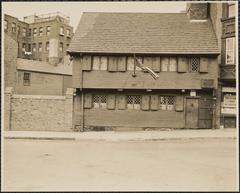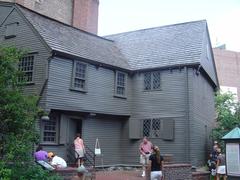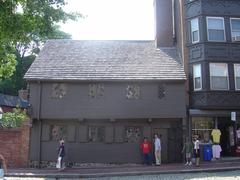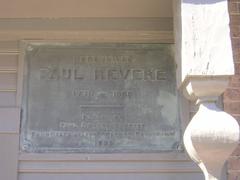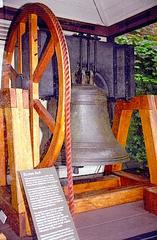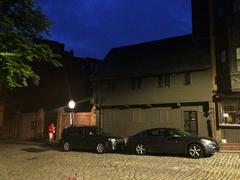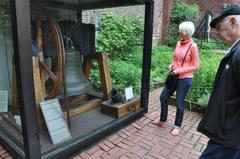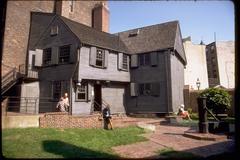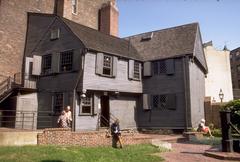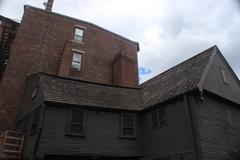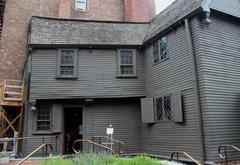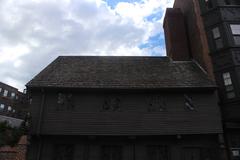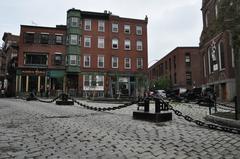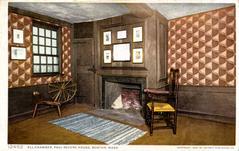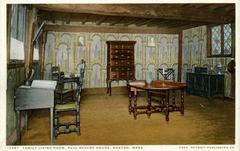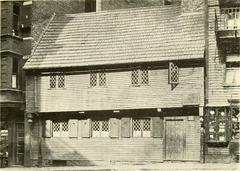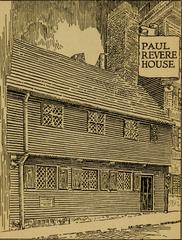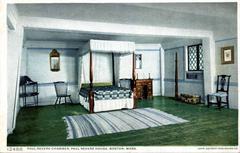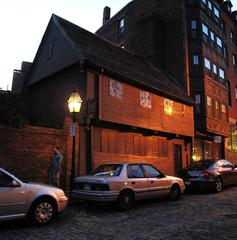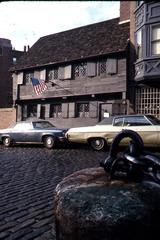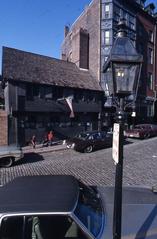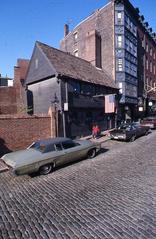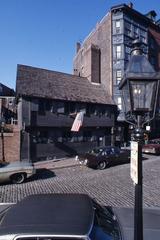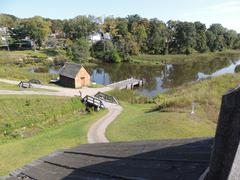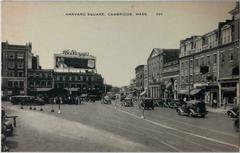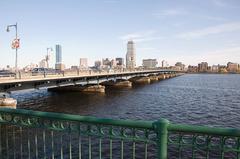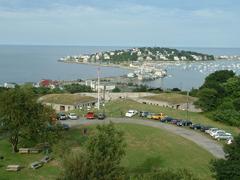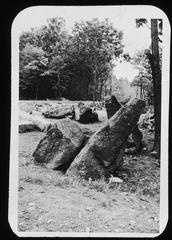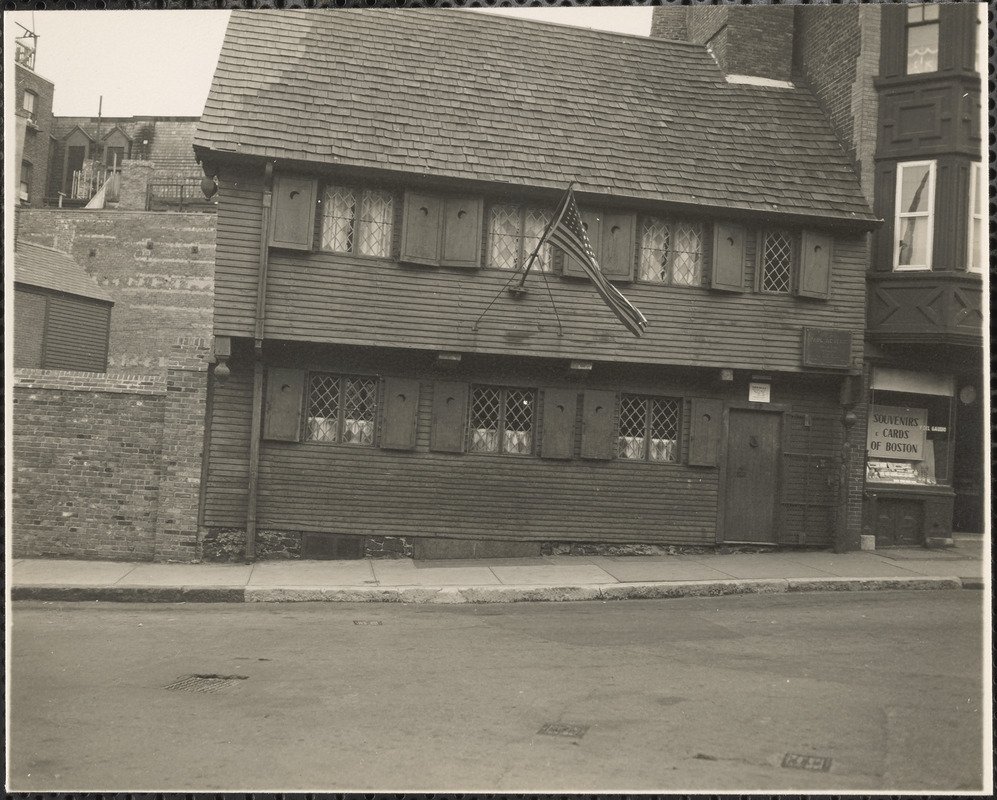
Paul Revere House Visiting Guide: History, Tickets, Tips, and More
Date: 18/07/2024
Introduction
Step back in time and explore one of Boston’s most iconic historical sites, the Paul Revere House. Nestled in the heart of the city’s North End, this well-preserved colonial home offers a unique glimpse into the life of Paul Revere, a patriot whose midnight ride played a crucial role in the American Revolution. Constructed around 1680 for Robert Howard, a wealthy merchant, the house is a classic example of early colonial architecture, featuring a timber frame, gabled roof, and overhanging second story (Historic New England). Paul Revere, a silversmith and patriot, purchased the house in 1770 and lived there with his family until 1800. It was from this very house that he embarked on his famous midnight ride on April 18, 1775, to warn the colonial militia of the approaching British forces, an event immortalized in Henry Wadsworth Longfellow’s poem “Paul Revere’s Ride” (National Park Service). Today, the Paul Revere House operates as a museum, offering visitors a chance to step back in time and explore the life and legacy of Paul Revere through original artifacts, exhibits on colonial life, and educational programs (Paul Revere House).
Table of Contents
- Introduction
- Early History and Construction
- Paul Revere’s Ownership
- Role in the American Revolution
- Post-Revere Ownership and Changes
- Preservation and Restoration
- The Paul Revere House Today
- Architectural Significance
- Educational Programs and Community Engagement
- Recent Developments and Future Plans
- Visitor Information
- Frequently Asked Questions (FAQ)
- Conclusion
Early History and Construction
The Paul Revere House, located at 19 North Square in Boston’s North End, is one of the oldest buildings in downtown Boston. Constructed around 1680, it was originally built for Robert Howard, a wealthy merchant. The house is a classic example of early colonial architecture, featuring a timber frame, gabled roof, and overhanging second story. This architectural style was common in the late 17th century and provides a glimpse into the domestic life of early American settlers (Historic New England).
Paul Revere’s Ownership
Paul Revere, a silversmith and patriot famous for his midnight ride during the American Revolution, purchased the house in 1770. Revere lived here with his family until 1800. During his residence, the house served not only as a home but also as a place of business. Revere’s silversmith shop was located nearby, and he used the house to conduct various aspects of his trade (Paul Revere House).
Role in the American Revolution
The Paul Revere House holds significant historical importance due to its association with Paul Revere’s role in the American Revolution. On the night of April 18, 1775, Revere embarked on his famous ride to warn the colonial militia of the approaching British forces. This event, immortalized in Henry Wadsworth Longfellow’s poem “Paul Revere’s Ride,” marked a pivotal moment in the lead-up to the battles of Lexington and Concord (National Park Service).
Post-Revere Ownership and Changes
After Revere sold the house in 1800, it underwent several changes in ownership and function. Throughout the 19th century, the building was used for various purposes, including a boarding house and a tenement for immigrant families. These changes reflect the broader demographic shifts in Boston’s North End, which became a hub for Irish, Jewish, and Italian immigrants during this period (Boston Landmarks Commission).
Preservation and Restoration
By the early 20th century, the Paul Revere House had fallen into disrepair. Recognizing its historical significance, the Paul Revere Memorial Association was formed in 1902 to preserve and restore the building. The association purchased the house in 1907 and undertook extensive restoration efforts to return it to its 18th-century appearance. These efforts included removing later additions, restoring original architectural features, and furnishing the interior with period-appropriate artifacts (Paul Revere Memorial Association).
The Paul Revere House Today
Today, the Paul Revere House operates as a museum, offering visitors a chance to step back in time and explore the life and legacy of Paul Revere. The museum features exhibits on Revere’s life, his famous midnight ride, and the broader context of the American Revolution. Visitors can view original artifacts, including Revere’s silverwork, and learn about the daily life of colonial Bostonians (Paul Revere House Museum).
Architectural Significance
The Paul Revere House is a rare surviving example of 17th-century urban architecture in Boston. Its timber-frame construction, gabled roof, and overhanging second story are characteristic of the period. The house’s preservation offers valuable insights into early American building practices and domestic life. The restoration efforts have been carefully documented, providing a model for historic preservation projects (Historic New England).
Educational Programs and Community Engagement
The Paul Revere House offers a range of educational programs and community events aimed at engaging visitors of all ages. These programs include guided tours, hands-on workshops, and special events that explore various aspects of colonial life and the American Revolution. The museum also collaborates with local schools to provide educational resources and field trip opportunities, helping to bring history to life for students (Paul Revere House Education).
Recent Developments and Future Plans
In recent years, the Paul Revere House has continued to evolve, with ongoing efforts to enhance the visitor experience and expand its educational offerings. Recent developments include the addition of a new visitor center, which provides additional exhibit space and modern amenities. Looking ahead, the museum plans to continue its mission of preserving and interpreting the legacy of Paul Revere for future generations (Paul Revere House News).
Visitor Information
For those planning a visit, the Paul Revere House is open year-round, with seasonal hours and special events throughout the year. Admission fees are modest, with discounts available for students, seniors, and groups. The museum is conveniently located in Boston’s historic North End, making it easily accessible by public transportation. Visitors are encouraged to check the museum’s website for the latest information on hours, admission, and upcoming events (Paul Revere House Visitor Info).
Ticket Prices and Opening Hours
- Regular Admission: $5 for adults, $1 for children (ages 5-17)
- Operating Hours: Open daily from 9:30 AM to 5:15 PM (April 15 - October 31), and from 9:30 AM to 4:15 PM (November 1 - April 14)
- Closed: Mondays (January - March), Thanksgiving, Christmas, and New Year’s Day
Travel Tips and Nearby Attractions
- Travel Tips: The Paul Revere House is easily accessible by public transportation. The closest T stations are Haymarket (Green and Orange lines) and North Station (Commuter Rail, Green, and Orange lines). Limited street parking is available, but public transportation is recommended.
- Nearby Attractions: While visiting the Paul Revere House, consider exploring other historical sites in the North End, such as the Old North Church, Copp’s Hill Burying Ground, and the Freedom Trail. The neighborhood is also famous for its Italian cuisine, so don’t miss the chance to enjoy a meal at one of the local restaurants.
Frequently Asked Questions (FAQ)
Q: What are the Paul Revere House visiting hours?
A: The Paul Revere House is open daily from 9:30 AM to 5:15 PM (April 15 - October 31), and from 9:30 AM to 4:15 PM (November 1 - April 14). It is closed on Mondays (January - March), Thanksgiving, Christmas, and New Year’s Day.
Q: How much are tickets to the Paul Revere House?
A: Regular admission is $5 for adults and $1 for children (ages 5-17). Discounts are available for students, seniors, and groups.
Q: Is the Paul Revere House accessible to visitors with disabilities?
A: The Paul Revere House aims to be accessible to all visitors. However, due to the historic nature of the building, there may be some limitations. Visitors are encouraged to contact the museum in advance for specific accessibility information.
Conclusion
The Paul Revere House stands as a testament to America’s rich colonial history and the enduring legacy of one of its most celebrated patriots. This historical landmark not only offers a peek into the architectural and domestic life of the 17th century but also serves as a vibrant educational resource that brings the story of the American Revolution to life. With its meticulously preserved interiors, engaging exhibits, and comprehensive educational programs, the Paul Revere House provides a meaningful and enriching experience for all visitors. Whether you’re exploring the Freedom Trail or delving into the depths of American history, a visit to the Paul Revere House is an opportunity to connect with the past in a profound and memorable way. For up-to-date information on visiting hours, ticket prices, and special events, be sure to check the official website. Don’t miss the chance to step into history and explore the legacy of Paul Revere at this iconic Boston landmark.


